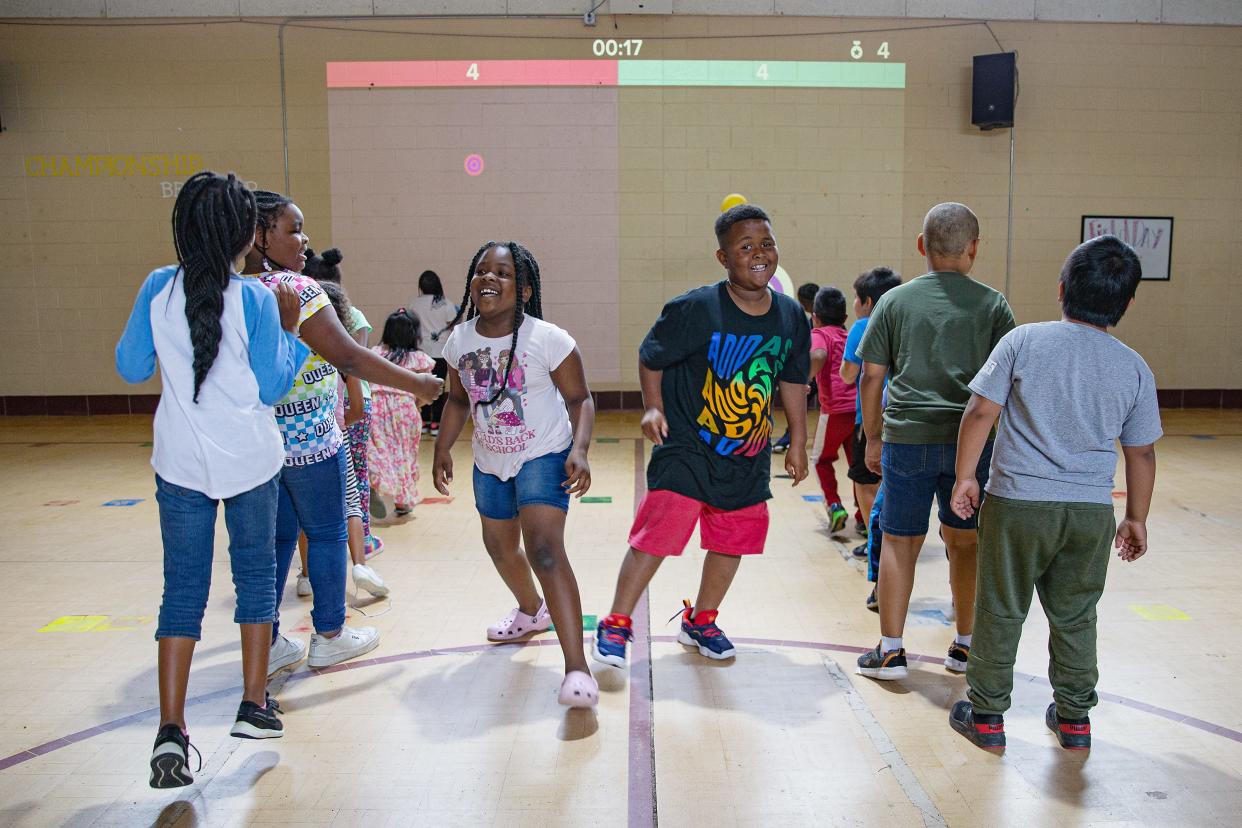Back to School: Gadsden system seeks more academic time for students

As far as "new" for back to school goes, athletics is the attention grabber for Gadsden City Schools.
Behind the high school, students now will find onsite facilities for baseball, softball, soccer and tennis — welcome additions that will mean students can participate in those sports on campus.
That's important, Superintendent Tony Reddick said, but the school system's primary focus remains building the best learning environment for students, and ensuring they are ready for the game that awaits all students after school days end, whether it's college or a career.
So while the system will be putting those fields to good use, Reddick said they will look at scheduling for high school and middle school students to give them more academic time.
Students are required to have one physical education credit in four years, he said, but, "We have kids who get eight (PE) credits."
The system wants to go more toward academic credits. There are three ways students can get college and career ready, Reddick said — through the Work Keys test, achieving ACT benchmarks and through Career Tech classes.
"You cannot get college and career ready playing sports," the superintendent said.
For younger students, the system used grant money received near the end of the last school year to bring academics into PE. At Floyd and Adams Elementary schools, new interactive gym equipment incorporates math and other academic skills into games. One such game calls on students to find the answer to a math problem, then toss a ball to hit the correct answer on a digitally projected gameboard.
Reddick acknowledged the challenge of preparing students for a future that's constantly under construction. He said there are estimates that 80% to 85% of the jobs in the next seven to 10 years have not been created yet.
"With our students being so proficient with technology," he said, "they should be doing more than TikToking and YouTubeing."
As a potential way to harness those interests in technology, Reddick said the system will offer graphic arts and video production studies. Courses need to make an effort to embrace that sort of thing, the superintendent said, adding that he's seen some of the work, "and it's good."
Reddick said the system needs to offer enrichment to students in different areas, while giving a foundation in the basics — to meet the needs of the whole student. He said the system has a strong staff and strong support from the school board to do that.
Support is essential, and it can't just come from schools. Reddick said strong support at home for students is essential. No matter what teachers and support staff do, they can't get children to school on time, and that's the most basic of things parents or guardians do to support their children's education.
"Kids come to school late because they don't drive," Reddick said. "Do you penalize an elementary or middle school kid for being late? They're at the mercy of whoever brings them to school."
The students are penalized academically as it is, he said, by what they miss when they aren't at school.
That need for support extends to the community — when people see school-age children walking around who should be in school, Reddick suggested asking why they aren't in class.
Reddick said the system is currently looking at at third-grade reading proficiency scores released a few weeks ago. System-wide, about 71% of Gadsden's students were reading at or above grade level.
The schools with lower scores — only one had a score below 50% — are those that traditionally face challenges, the superintendent said, and demographics play a role. The schools with the lowest scores also have some of the highest numbers of students living in homes below the poverty level.
Also, about 20% of the student population are English Language Learners, which impacts test scores.
Statewide, according to the state Department of Education, 78% of third-graders are reading at or above grade level.
Reddick said he's heard critics of the Gadsden system who seek to compare it to systems like Hoover and Mountain Brook. He pointed out that the level of financial support for Gadsden schools is different than the support provided in those systems.
The system lost some of the funding it had received from the City of Gadsden in the most recent budget. "I guess they think we have enough," Reddick said.
"It seems the City of Gadsden considers us an outside agency," the superintendent said, when it comes to funding. "We're an inside agency."
Contact Gadsden Times reporter Donna Thornton at 256-393-3284 or donna.thornton@gadsdentimes.com.
This article originally appeared on The Gadsden Times: Back to school with Gadsden City system

